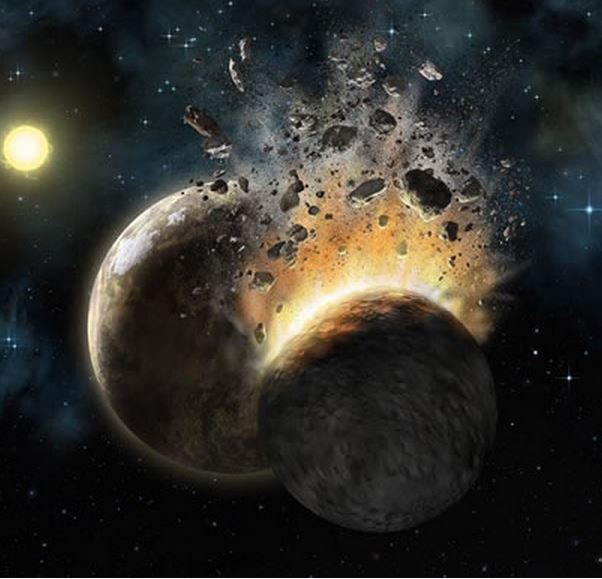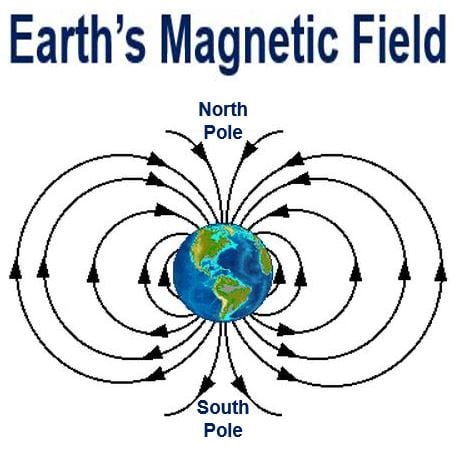If a Mercury-like planet had not collided with Earth billions of years ago, our planet would probably not have developed a magnetic field, which would have allowed too much cosmic radiation to hit the surface for life to develop and flourish, scientists from the University of Oxford say.
The researchers, who work at the University’s Department of Earth Sciences, published details of their latest study in the journal Nature.
Prof. Bernard Wood and Dr. Anke Wohlers say that after analyzing elements that form the Earth’s core and mantle, a major impact must have occurred with a Mercury-like planet a long time ago, which caused Earth’s core to heat up.

The Earth’s core’s rare-earth metal ratios could not have been the result of just meteorite impacts. There must have been a major collision with a sizable Mercury-like planet.
The Earth’s core is hot, this heat drives the circulation of molten iron in the centre of the planet, which in turn generates the magnetic field that deflects the harmful cosmic radiation so that it does not hit the surface of the planet.
It is very doubtful that any type of life as we know it would have emerged and then thrived if that radiation had not been deflected, the authors say.
There are higher concentrations of two rare earth metals – samarium and neodymium – in the Earth’s crust and mantle than what has been observed in meteorites. In other words, the levels present of those two rare-earth metals could not have come from just meteorite impacts.
Earth’s rare-earth metal ratios point to something else happening many billions of years ago.
The authors suggest that a Mercury-type planet with high sulphur concentrations crashed into Earth and became incorporated into our planet.
The sulphur would have triggered a chemical evolution that eventually led to Earth’s current balance of samarium and neodymium, they wrote.

Earth’s magnetic field deflects most of the solar wind, whose charged particles would strip away the ozone layer that protects the planet from harmful ultraviolet radiation. (Image: unc.edu)
No life or water on the surface with no magnetic field
More importantly, as far as life forms (including humans) are concerned, the collision with the addition of sulphur to a juvenile Earth would have generated the heat source that drives the ‘geo-dynamo’ that created our planet’s magnetic field.
This magnetic field deflects cosmic radiation. Without it liquid water on the surface and life would not exist today.
The researchers say that if the current samarium-to-neodymium ratio in our planet’s crust and mantle could not have come merely form meteorite bombardments, it may have been the result of a major collision between Earth and a smaller, Mercury-like, sulphur-rich planet.
As the Mercury-like planet integrated into Earth, a core rich in sulphur would have emerged with the production of thorium and uranium, which generated the necessary heat to drive the circulation of molten iron that created the magnetic field.
In an Abstract in the journal, Wood and Wohlers concluded:
“We show here that addition of a reduced Mercury-like body (or, alternatively, an enstatite-chondrite-like body) rich in sulfur to the early Earth would generate a superchondritic Sm/Nd in the mantle and an 142Nd/144Nd anomaly of approximately +14 parts per million relative to chondrite. In addition, the sulfur-rich core would partition uranium strongly and thorium slightly, supplying a substantial part of the ‘missing’ heat source for the geodynamo.”
In an accompanying Letter, Richard Carlson of the Carnegie Institution for Science in Washington D.C., wrote that the computer model the scientists had devised appeared to solve the problem of the missing heat source and dynamo. However, it begs a new question regarding how the Earth ended up in its present state.
Dr. Carlson said:
“The energy source that drives the generation of the Earth’s magnetic field in the core has long been a topic of discussion.”
References:
Anke Wohlers & Bernard J. Wood. “A Mercury-like component of early Earth yields uranium in the core and high mantle 142Nd.” Nature. Published 15 April, 2015. DOI: 10.1038/nature14350.
Richard W. Carlson. “Planetary science: A new recipe for Earth formation.” Nature. Published 16 April, 2015. DOI: 10.1038/520299a.
